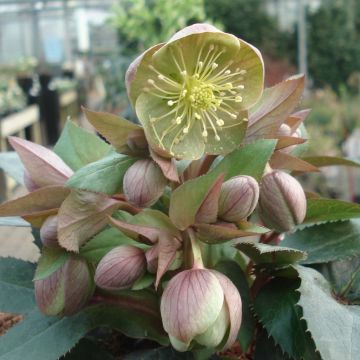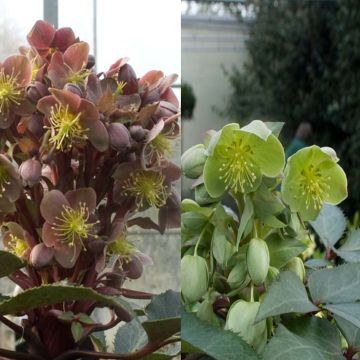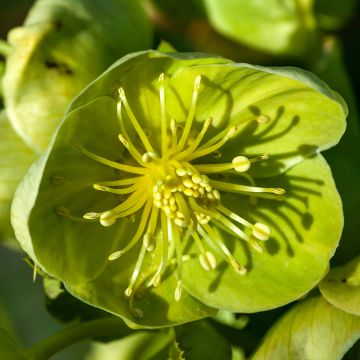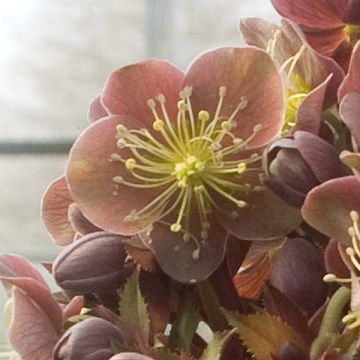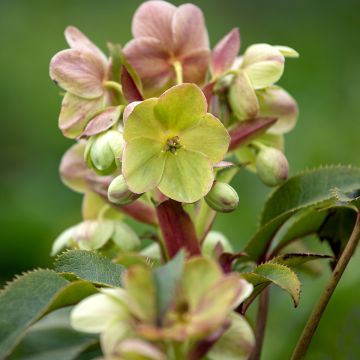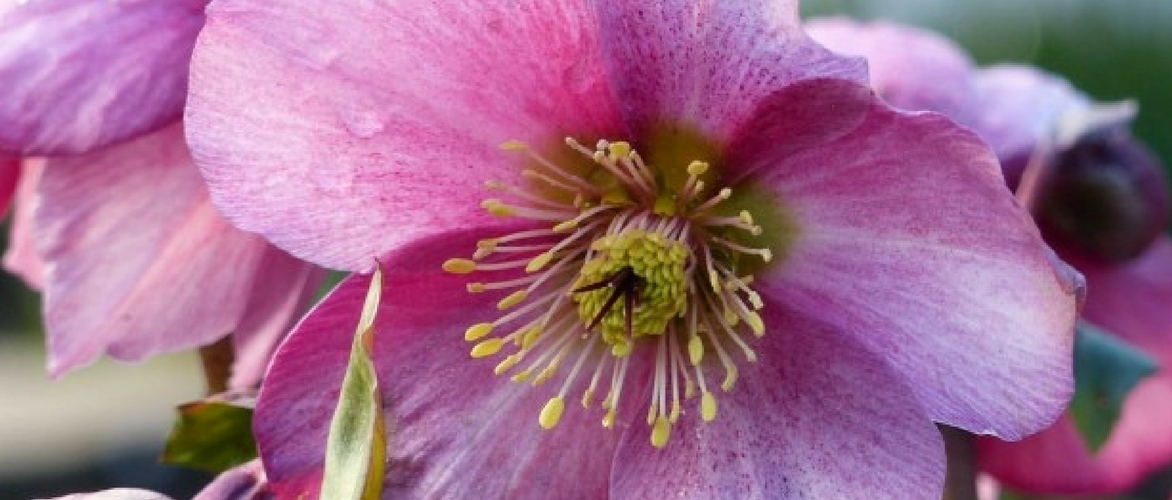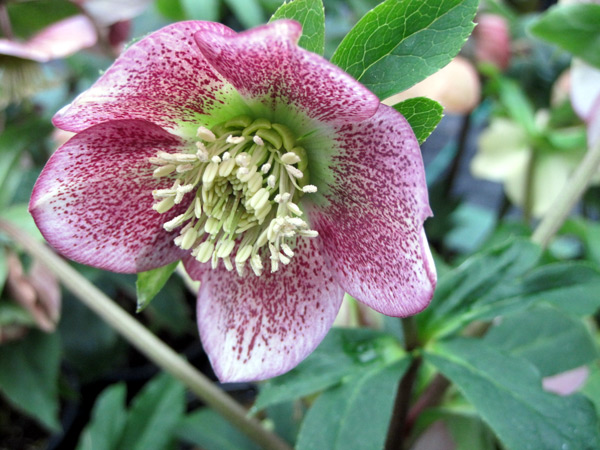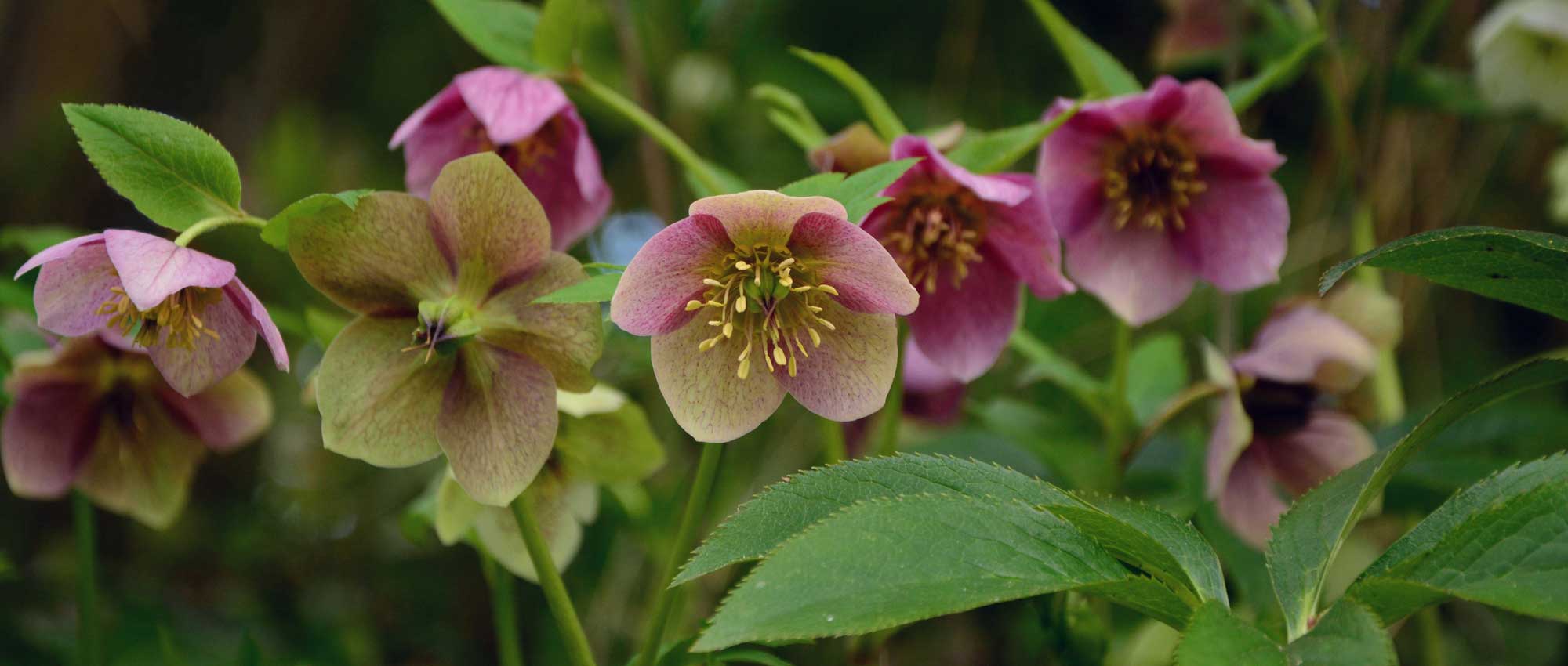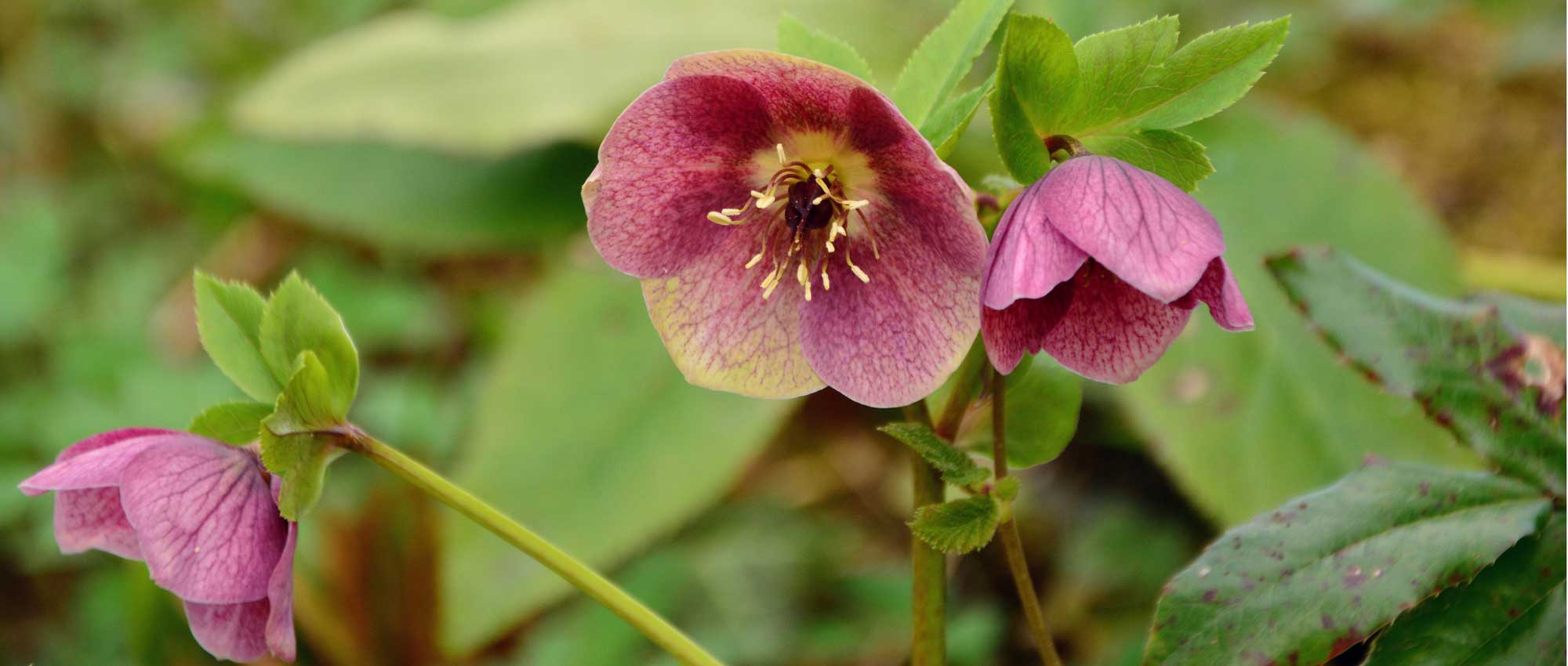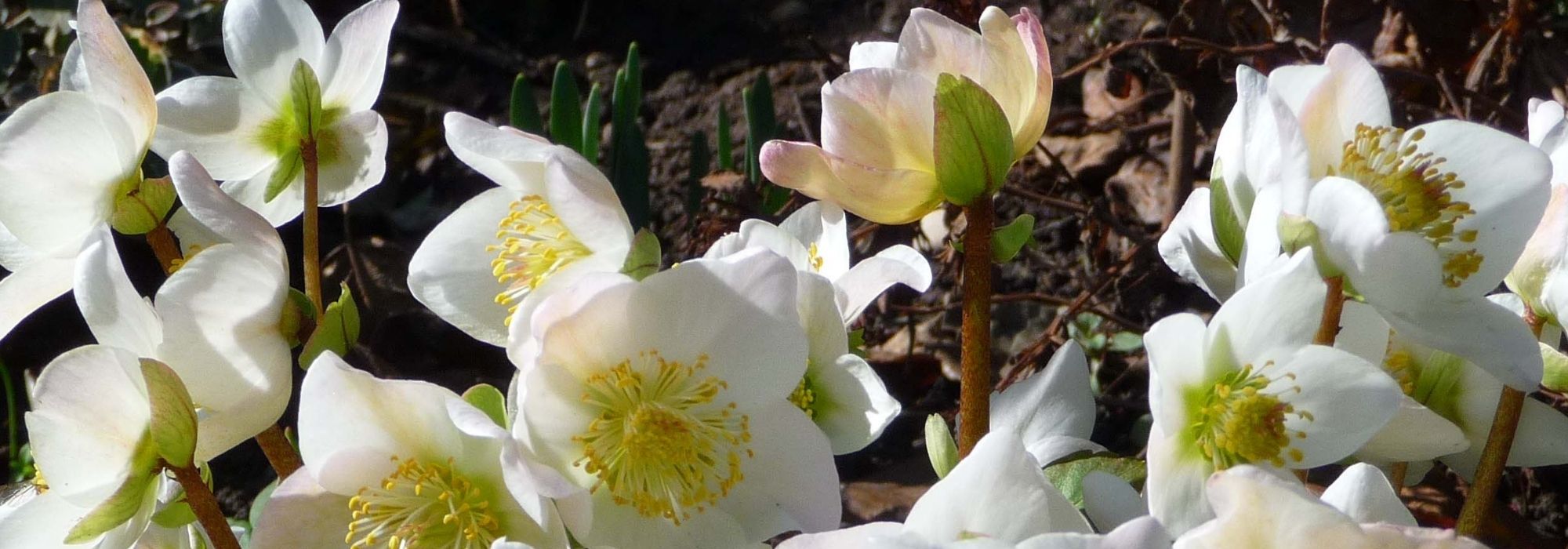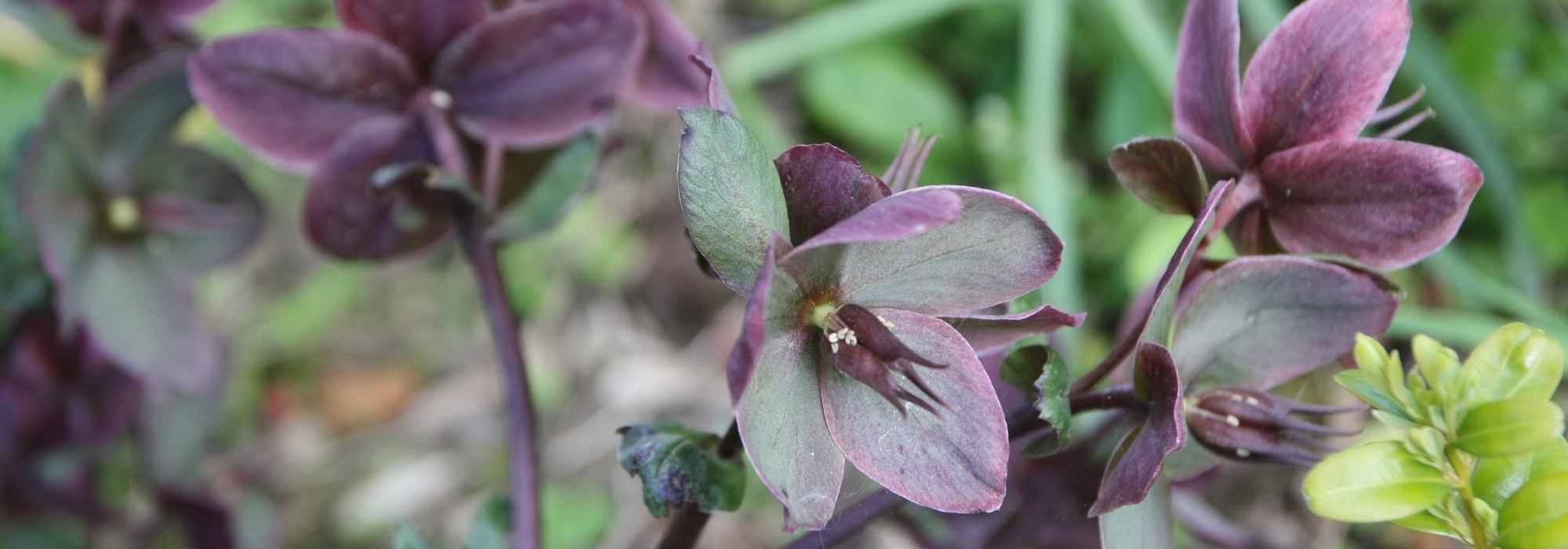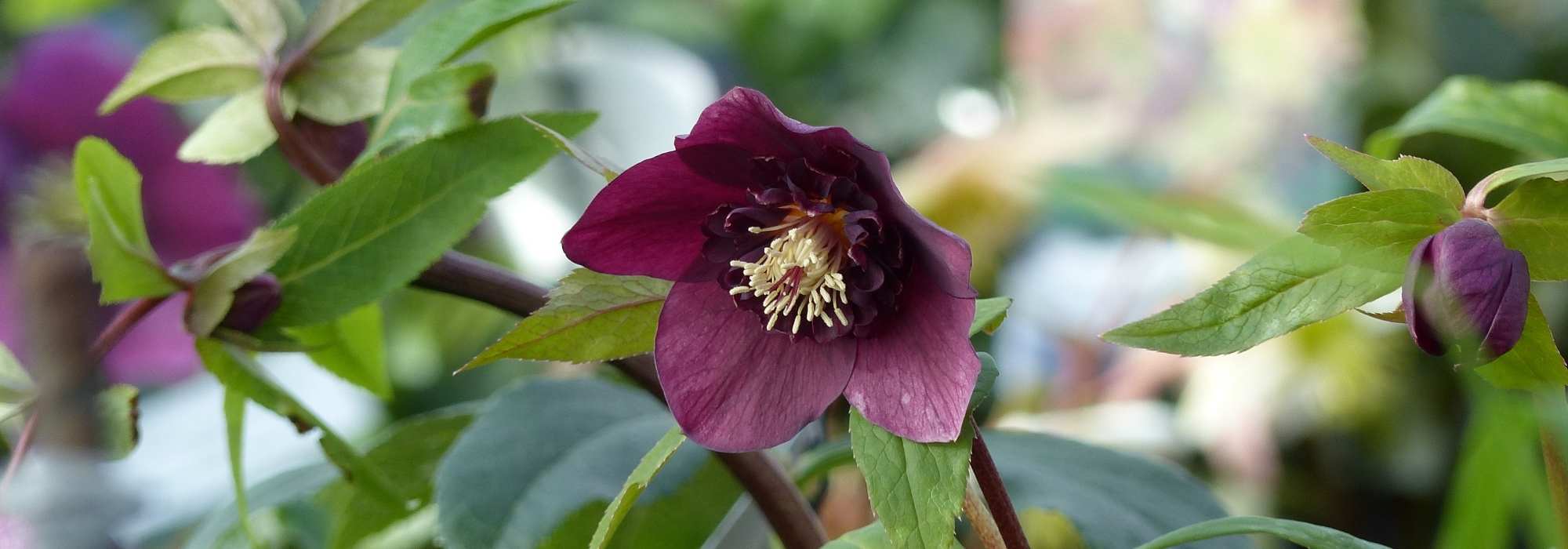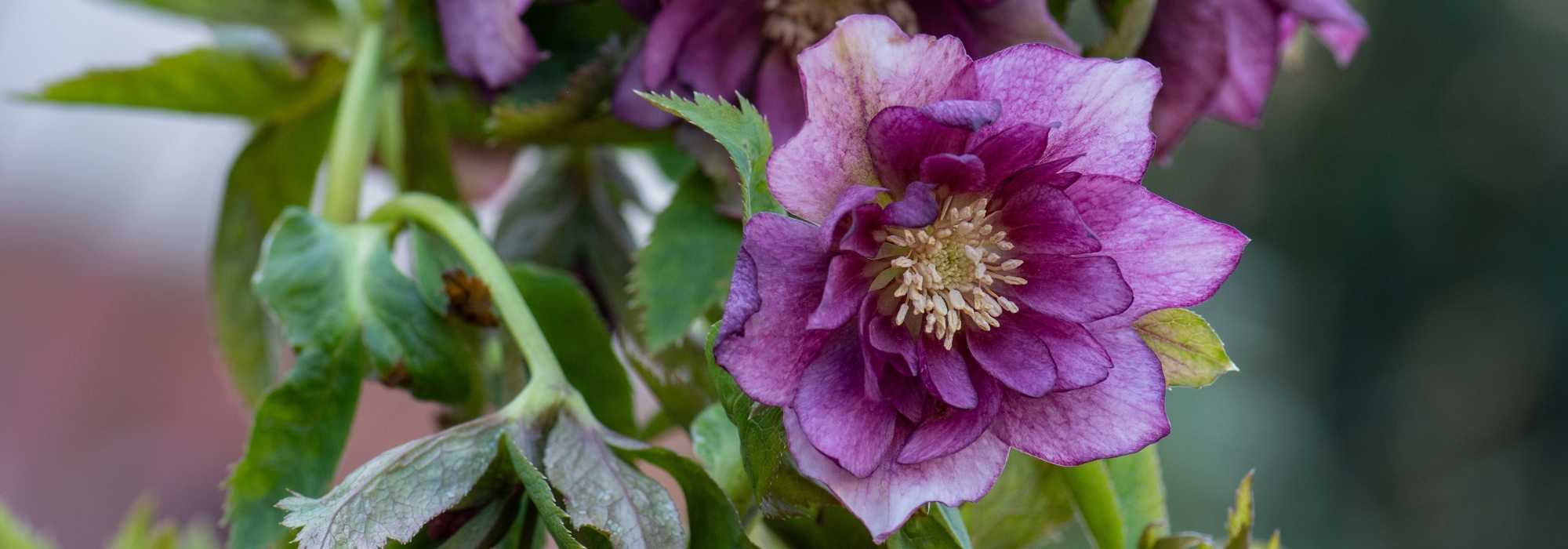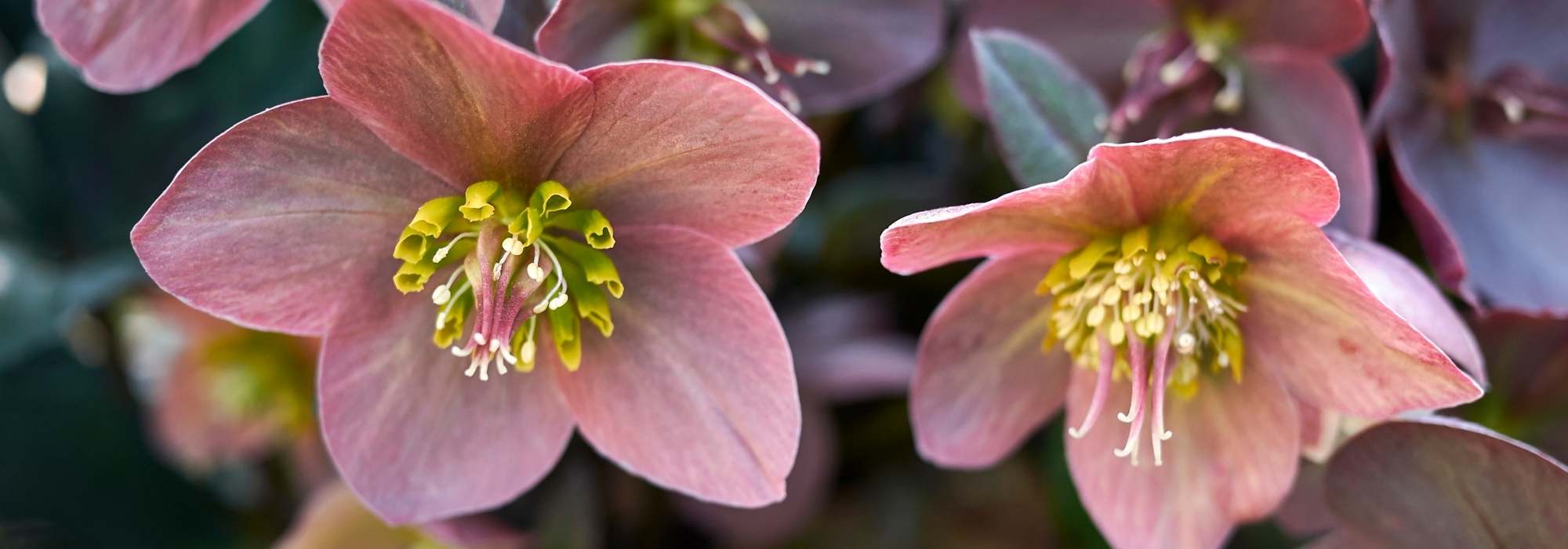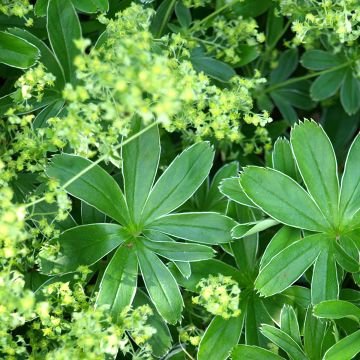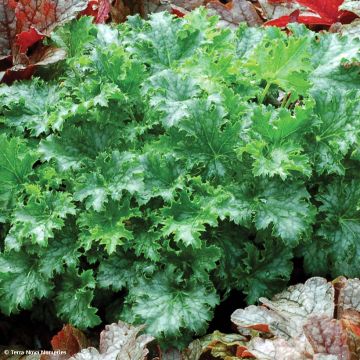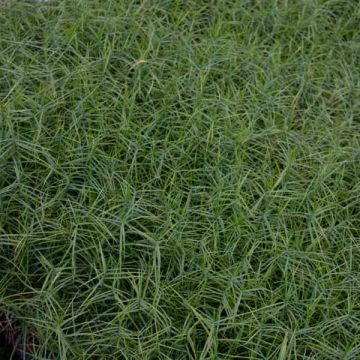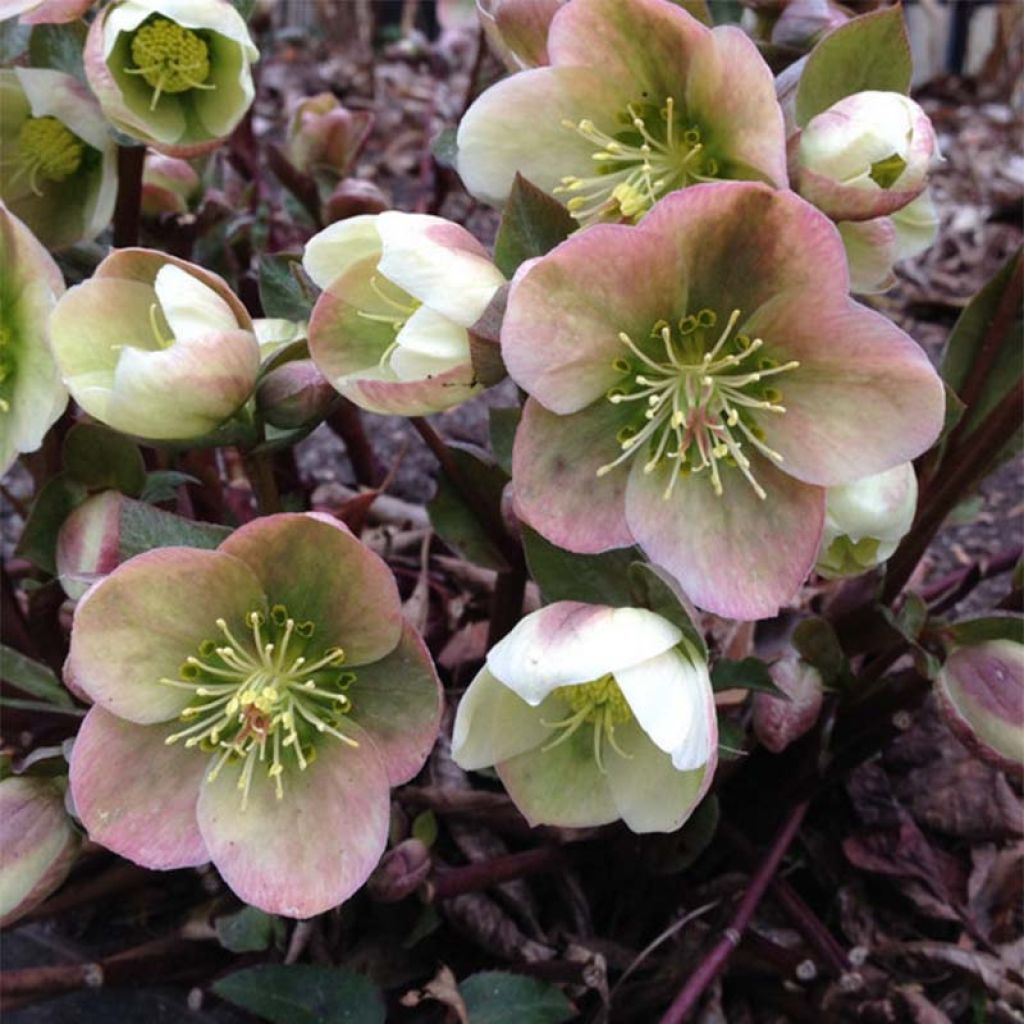

Hellebore ericsmithii
Helleborus x ericsmithii 'Winters Song' - Hellebore
Helleborus niger x sternii ericsmithii (Winter's Song)
Hellebore
Special offer!
Receive a €20 voucher for any order over €90 (excluding delivery costs, credit notes, and plastic-free options)!
1- Add your favorite plants to your cart.
2- Once you have reached €90, confirm your order (you can even choose the delivery date!).
3- As soon as your order is shipped, you will receive an email containing your voucher code, valid for 3 months (90 days).
Your voucher is unique and can only be used once, for any order with a minimum value of €20, excluding delivery costs.
Can be combined with other current offers, non-divisible and non-refundable.
Why not try an alternative variety in stock?
View all →This plant carries a 12 months recovery warranty
More information
We guarantee the quality of our plants for a full growing cycle, and will replace at our expense any plant that fails to recover under normal climatic and planting conditions.
Would this plant suit my garden?
Set up your Plantfit profile →
Description
Helleborus x ericsmithii is a wonderful hybrid "Christmas rose", resulting from the joyful mix of the famous H. niger, H. lividus native to Majorca, and H. argutifolius originating from Corsica. As it does not exhaust itself by producing seeds, it delivers an abundance of single, fragrant flowers from January onwards, with an ivory-white colour that gradually turns pink over the days. They are gathered on floral stems that emerge from a beautiful foliage delicately marbled with silver. This perennial collector's plant is easy to grow in the sun or in partial shade, or even in shade, but in light and well-drained soil.
Helleborus x ericsmithii HGC JOKER 'Coseh 740', also known as 'Winter's Song', descends from H. x sternii, a horticultural hybrid initially obtained in England in 1939 by Dr. Frederic Stern. This excellent perennial plant, obtained in the 1970s, has inherited the tolerance to dry soils from the Corsican Hellebore, the beautiful colours of H. lividus, observed both on the foliage and the flowers, and the hardiness of H. niger. Its breeder, the British Eric Smith, is the originator of many Hosta ('Halcyon', 'Hadspen Blue'), Crocus tommasinianus 'Eric Smith', and Brunnera 'Hadspen Cream', among other treasures created for our gardens.
'Winter's Song', as it is aptly named, is a very beautiful selection characterized by dark green foliage finely veined with light silver. It is also distinguished by its pink-purple stems and its large, single, nectar-rich and fragrant flowers. This perennial will reach a maximum height of 50cm (20in) when in bloom but will spread over time. A well-established plant can form a large clump with a diameter of 95cm (37in) after a few years. Flowering takes place in winter, more or less early depending on the climate. The floral stems bloom abundantly from January to April. The 10cm (4in) diameter flowers are simple and rounded, cup-shaped, with yellow stamens at their core. White when opening, they take on more or less pink-violet colouration on the outside, with the inside of the sepals often marked by a darker area. The foliage, usually evergreen and leathery, is composed of palmate leaves, quite wide, with toothed and spiny edges. Hellebores do not like to be moved: once established, young plants sometimes take 2 to 3 years to flower. This sterile variety, particularly delicate to divide, is often multiplied 'in vitro' by tissue culture.
Use Hellebores as elements of an ancient tapestry, mixing them with woodland plants of brighter colours. Unlike many other varieties, this Hellebore x ericsmithii prefers the sunny areas of the garden, allowing it to be admired up close and to breathe in the fragrance of its flowers along a path or at the edge of a bushwood. Its Mediterranean origins also allow gardeners in drier and warmer climates to adopt this different but fascinating Christmas rose, in shaded or partially shaded situations in this case. It can be planted in groups, like a bouquet, near the entrance of the house, to enjoy its extraordinary presence up close throughout the year. For example, it can be associated with Euphorbia amygdaloides, Iris reticulata 'Katharine Hodgkin', very red dwarf tulips 'Red Riding Hood', Geranium macrorrhizum, Glechoma hederacea, Algerian Iris or not too exuberant periwinkles.
Helleborus x ericsmithii 'Winters Song' - Hellebore in pictures
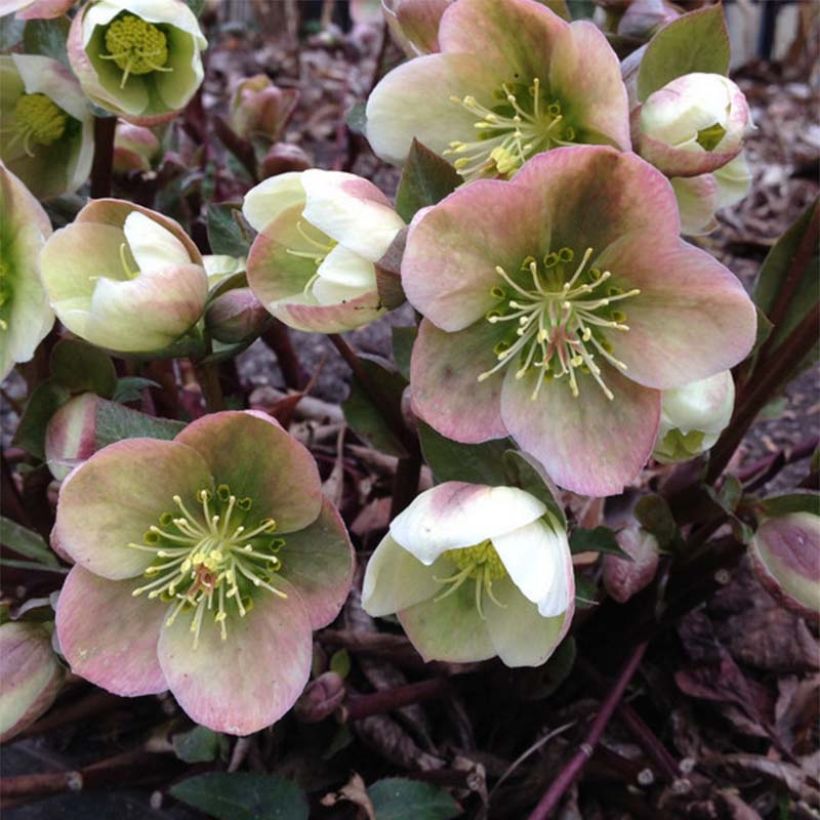

Flowering
Foliage
Plant habit
Botanical data
Helleborus
niger x sternii
ericsmithii (Winter's Song)
Ranunculaceae
Hellebore
Cultivar or hybrid
Planting and care
Helleborus x ericsmithii shows a clear preference for sunny to partially shaded exposures and well-drained soils. Just like its ancestor the Corsican Hellebore, it can grow in any neutral to limestone soil, rather deep and loose, in partial or light shade. It is hardy down to about -15°C (5°F), in healthy soil and sheltered conditions. In cold regions, special care should be taken to reserve the most sheltered exposures from cold and icy winds, without scorching sun. Further south, once well established, this variety will not need any watering in summer. This perennial is planted in early autumn in mild climates, in spring in cooler climates. It thrives in deeply worked soil mixed with leaf compost and river sand. Water the plants well after planting and then add a layer of mulch 2 to 5cm (1 to 2in) thick. Regularly remove faded leaves to improve flowering. Make sure to respect a planting distance of 40 to 50cm (16 to 20in) between each plant to promote their development. Helleborus x ericsmithii does not tolerate severe frost in poorly drained soil, clayey and heavy soils, or stagnant water that can cause its roots to rot.
This sterile variety does not produce seeds, but compensates with remarkably abundant flowering. It is sometimes slow to establish and difficult to multiply by division of clumps.
Planting period
Intended location
Care
Planting & care advice
This item has not been reviewed yet - be the first to leave a review about it.
Similar products
Haven't found what you were looking for?
Hardiness is the lowest winter temperature a plant can endure without suffering serious damage or even dying. However, hardiness is affected by location (a sheltered area, such as a patio), protection (winter cover) and soil type (hardiness is improved by well-drained soil).

Photo Sharing Terms & Conditions
In order to encourage gardeners to interact and share their experiences, Promesse de fleurs offers various media enabling content to be uploaded onto its Site - in particular via the ‘Photo sharing’ module.
The User agrees to refrain from:
- Posting any content that is illegal, prejudicial, insulting, racist, inciteful to hatred, revisionist, contrary to public decency, that infringes on privacy or on the privacy rights of third parties, in particular the publicity rights of persons and goods, intellectual property rights, or the right to privacy.
- Submitting content on behalf of a third party;
- Impersonate the identity of a third party and/or publish any personal information about a third party;
In general, the User undertakes to refrain from any unethical behaviour.
All Content (in particular text, comments, files, images, photos, videos, creative works, etc.), which may be subject to property or intellectual property rights, image or other private rights, shall remain the property of the User, subject to the limited rights granted by the terms of the licence granted by Promesse de fleurs as stated below. Users are at liberty to publish or not to publish such Content on the Site, notably via the ‘Photo Sharing’ facility, and accept that this Content shall be made public and freely accessible, notably on the Internet.
Users further acknowledge, undertake to have ,and guarantee that they hold all necessary rights and permissions to publish such material on the Site, in particular with regard to the legislation in force pertaining to any privacy, property, intellectual property, image, or contractual rights, or rights of any other nature. By publishing such Content on the Site, Users acknowledge accepting full liability as publishers of the Content within the meaning of the law, and grant Promesse de fleurs, free of charge, an inclusive, worldwide licence for the said Content for the entire duration of its publication, including all reproduction, representation, up/downloading, displaying, performing, transmission, and storage rights.
Users also grant permission for their name to be linked to the Content and accept that this link may not always be made available.
By engaging in posting material, Users consent to their Content becoming automatically accessible on the Internet, in particular on other sites and/or blogs and/or web pages of the Promesse de fleurs site, including in particular social pages and the Promesse de fleurs catalogue.
Users may secure the removal of entrusted content free of charge by issuing a simple request via our contact form.
The flowering period indicated on our website applies to countries and regions located in USDA zone 8 (France, the United Kingdom, Ireland, the Netherlands, etc.)
It will vary according to where you live:
- In zones 9 to 10 (Italy, Spain, Greece, etc.), flowering will occur about 2 to 4 weeks earlier.
- In zones 6 to 7 (Germany, Poland, Slovenia, and lower mountainous regions), flowering will be delayed by 2 to 3 weeks.
- In zone 5 (Central Europe, Scandinavia), blooming will be delayed by 3 to 5 weeks.
In temperate climates, pruning of spring-flowering shrubs (forsythia, spireas, etc.) should be done just after flowering.
Pruning of summer-flowering shrubs (Indian Lilac, Perovskia, etc.) can be done in winter or spring.
In cold regions as well as with frost-sensitive plants, avoid pruning too early when severe frosts may still occur.
The planting period indicated on our website applies to countries and regions located in USDA zone 8 (France, United Kingdom, Ireland, Netherlands).
It will vary according to where you live:
- In Mediterranean zones (Marseille, Madrid, Milan, etc.), autumn and winter are the best planting periods.
- In continental zones (Strasbourg, Munich, Vienna, etc.), delay planting by 2 to 3 weeks in spring and bring it forward by 2 to 4 weeks in autumn.
- In mountainous regions (the Alps, Pyrenees, Carpathians, etc.), it is best to plant in late spring (May-June) or late summer (August-September).
The harvesting period indicated on our website applies to countries and regions in USDA zone 8 (France, England, Ireland, the Netherlands).
In colder areas (Scandinavia, Poland, Austria...) fruit and vegetable harvests are likely to be delayed by 3-4 weeks.
In warmer areas (Italy, Spain, Greece, etc.), harvesting will probably take place earlier, depending on weather conditions.
The sowing periods indicated on our website apply to countries and regions within USDA Zone 8 (France, UK, Ireland, Netherlands).
In colder areas (Scandinavia, Poland, Austria...), delay any outdoor sowing by 3-4 weeks, or sow under glass.
In warmer climes (Italy, Spain, Greece, etc.), bring outdoor sowing forward by a few weeks.






























